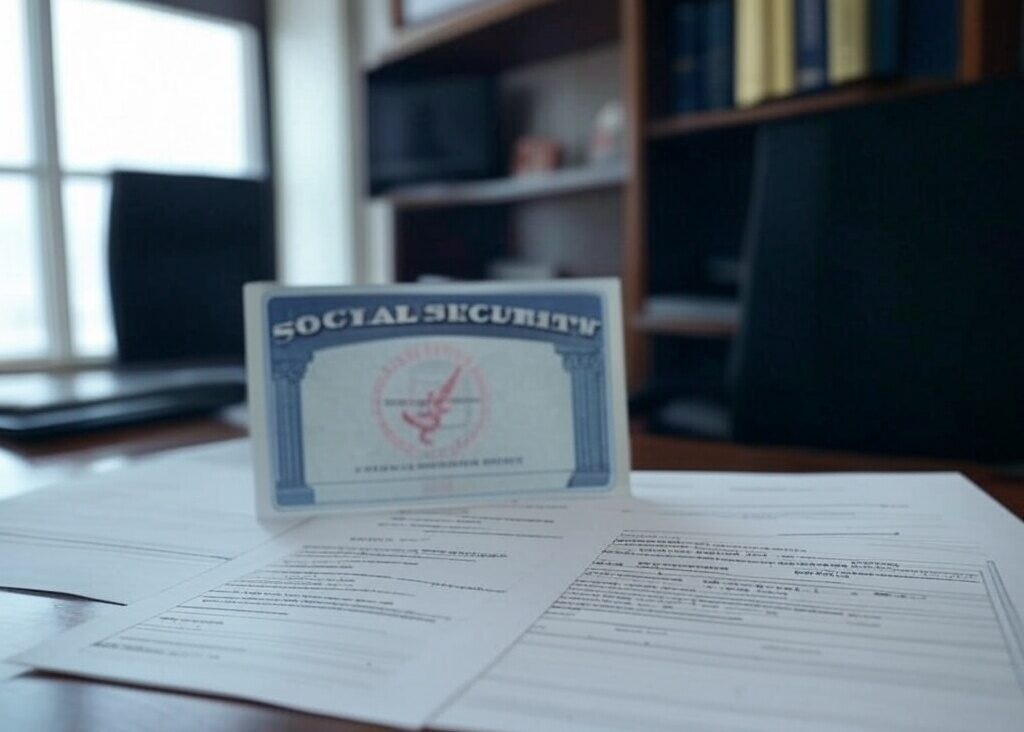Social Security Alerts, News & Updates
$72 Billion in Social Security Payment Errors Uncovered
Uncover the shocking $72 billion in Social Security payment errors revealed by the administration, highlighting critical misallocations that demand attention.

The Office of Inspector General’s recent audit has uncovered what might be the government’s most expensive arithmetic adventure since someone forgot to convert metric units on that Mars orbiter. For the millions of Americans who depend on Social Security benefits, this revelation raises both eyebrows and serious questions about how their lifeline is being managed.
The Great Social Security Mathematics Mystery
Let’s break down this financial fiasco in terms we can all understand. The Social Security Administration has been distributing improper payments – both overpayments and underpayments – with the enthusiasm of a malfunctioning ATM.
In fiscal year 2022 alone, the numbers are genuinely jaw-dropping:
- Old-Age, Survivors, and Disability Insurance (OASDI): $4.6 billion in improper payments
- Supplemental Security Income (SSI): $4.9 billion in payment errors
- Combined total: Nearly $10 billion in a single year
To put this in perspective, $10 billion could fund NASA’s annual budget, provide free school lunches nationwide, or buy approximately 2 billion avocado toasts (millennial math, anyone?).
How Did We Get Here? A Comedy of Errors
The reasons behind this monumental miscalculation are surprisingly ordinary, which somehow makes it even more remarkable. According to the Inspector General’s findings, the primary culprits include:
1. The “Forgot to Mention” Factor
Beneficiaries failing to report changes in their financial situations. We get it – paperwork isn’t exactly anyone’s favorite hobby. But forgetting to mention that windfall from selling your vintage Beanie Baby collection can lead to overpayments that Uncle Sam will eventually want back (with interest that’s decidedly less cuddly).
2. Human Error: Now in Billion-Dollar Flavor
Processing mistakes by Social Security Administration employees prove that even government workers are human. When you’re processing millions of claims, occasionally putting a decimal point in the wrong place happens. Unfortunately, when dealing with government-scale numbers, a misplaced decimal can mean the difference between buying groceries and buying a grocery store.
3. The Medical Documentation Tango
Insufficient medical documentation continues to plague the system. Between doctors’ handwriting that looks like ancient hieroglyphics and medical records that go missing faster than socks in a dryer, it’s a wonder any claims get processed correctly.
4. Verification Systems: The Weakest Link
The lack of robust verification systems has created opportunities for both honest mistakes and less-honest individuals. It’s like having a bouncer at a nightclub who checks IDs by squinting really hard and hoping for the best.
The Real Impact: Beyond the Laughs
While it’s tempting to chuckle at the sheer scale of these errors, the reality is sobering for those affected. For Social Security beneficiaries living on fixed incomes, even small payment errors can mean the difference between paying bills on time and choosing which necessities to skip.
If You’ve Been Overpaid: The government will eventually notice and request repayment. This isn’t like finding a $20 bill in your winter coat – it’s more like borrowing from a very patient but ultimately persistent relative.
If You’ve Been Underpaid: You may be entitled to back payments, but claiming them requires navigating the bureaucratic obstacle course known as “calling the Social Security Administration.” Pro tip: Pack snacks and clear your schedule.
What’s Being Done About It?
The Social Security Administration has agreed to implement the Inspector General’s recommendations, which we can only hope are more specific than “try harder” and “maybe use a calculator.” These improvements reportedly include:
- Enhanced verification systems (Translation: Actually checking if people are who they say they are)
- Better employee training (Remedial math might be involved)
- Improved communication with beneficiaries (Beyond the current “wait on hold until you question existence” method)
- Stronger oversight mechanisms (Someone to watch the people watching the money)
Your Action Items: What You Should Do
If you’re a Social Security beneficiary, here’s your homework assignment (don’t worry, it won’t be graded):
- Review Your Statements Regularly: Check your benefit amounts like you check your Instagram – frequently and with mild anxiety.
- Report Changes Promptly: New job? Inheritance? Won the lottery? Tell Social Security immediately. They’ll find out eventually, and they have less sense of humor about surprises than we do.
- Keep Detailed Records: Document everything. In the battle of “he said, she said” with the government, paperwork is your ammunition.
- Question Discrepancies: If something looks wrong, it probably is. Don’t assume the government got it right – $72 billion in errors suggests otherwise.
The Bottom Line: Laughing Through the Tears
While $72 billion in payment errors sounds like the punchline to a very expensive joke, it’s a serious issue affecting real people’s lives. The Social Security Administration processes benefits for over 70 million Americans, and even a small error rate can translate to massive numbers when you’re dealing with that scale.
The good news? These errors have been identified, and steps are being taken to fix them. The bad news? If government efficiency in fixing problems matches their efficiency in creating them, we might be in for a long wait.
In the meantime, stay vigilant about your benefits, maintain your sense of humor (you’ll need it when calling the SSA), and remember: somewhere in that $72 billion might be your missing payment. Finding it just requires patience, persistence, and possibly a mathematical miracle.
Remember: This article is for informational purposes only. If you suspect errors in your Social Security payments, contact the SSA directly at 1-800-772-1213. And yes, they know about the hold times. They’re working on it. Allegedly.